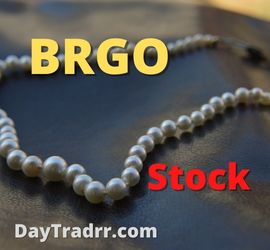What Is a Fund Of Funds (FOF)?
 A Fund of Funds (FOF) is a pooled investment in a portfolio of shares holding other funds rather than investing directly in stocks or bonds.
A Fund of Funds (FOF) is a pooled investment in a portfolio of shares holding other funds rather than investing directly in stocks or bonds.
It is also known as a multi-manager investment that pools funds and invests in other types of funds. In other words, its portfolio contains different underlying portfolios of other funds. These holdings replace any direct investment in bonds, stocks, and other types of securities. FOFs usually invest in other mutual funds or hedge funds. They are typically classified as fettered – which means they are able to invest in funds managed by the FOF’s managing company. Or, unfettered – and able to invest in funds across the market.
In summary, a fund of funds (FOF) is a pooled fund that invests in other funds. FOFs usually invests in other hedge funds or mutual funds. The fund of funds (FOF) strategy aims to achieve broad diversification and minimal risk. Funds of funds tend to have higher expense ratios than regular mutual funds.
(Source: investopedia.com)
How a Fund Of Funds Works
The fund of funds (FOF) strategy aims to achieve broad diversification and appropriate asset allocation. To this end, it employs investments in a variety of fund categories that are all wrapped into one portfolio. There are different kinds of FOFs. Each type focuses on a different investment scheme. A FOF may be structured as a mutual fund, a hedge fund, a private equity fund, or an investment trust. The FOF may be fettered, meaning it only invests in portfolios managed by one investment company. Alternatively, the FOF can be unfettered. This lets it invest in external funds controlled by other managers from other companies. i
By purchasing a mutual fund that invests in other mutual funds, there is the added protection of multiple money managers. Also, much more diversity than one fund would give them. A fund of funds (FOF) is an investment product made up of various mutual funds. Essentially, a mutual fund for mutual funds. They are often used by investors who have smaller investable assets, limited ability to diversify, or who are not that experienced in choosing mutual funds. In short, a FOF gives the little guy the professional management and diversification that have often been reserved for the wealthy.
Benefits of a Fund of Funds
- Spreads risk – A FOF spreads out risk. Owning one mutual fund reduces risk by owning several stocks. However, a FOF spreads risk among hundreds or even thousands of stocks contained. It does this through the multiple mutual funds it invests in. FOFs also provides the opportunity to reduce the risk of investing with a single fund manager.
- Lowers investment threshold – Usually, each mutual fund has a minimum investment threshold to buy-in—usually $1,000. The individual may not be able to afford the minimums for several mutual funds at once. Buying a mutual fund that invests in other funds means the individual does not have to meet those minimums.
- Gives greater market exposure – The emergence of FOFs is pushed by demand from investors to have more safety while trying to keep up with or beat the market. However, it must be said that the benefit of more safety is not endless. If the overall market takes a tumble, so may mutual funds and the FOFs that have invested in them.
(Source: ibid)
Fund of Funds Advantages
Typically, FOFs attract small investors who want to get better exposure with fewer risks. This is compared to directly investing in securities—or even in individual funds. Investing in a FOF gives the investor professional wealth management services and expertise. Investing in a FOF also allows investors with limited capital to tap into diversified portfolios with different underlying assets. Many of these would be out-of-reach for the average retail investor. For example, hedge funds typically require six-figure minimum investments. Or, they require investors to have a minimum net worth—or both. Most FOFs require a formal due-diligence procedure for their fund managers. This is both for their own and those managing the underlying funds. Applying managers’ backgrounds are checked. Just one more layer to ensure the portfolio handler’s background and credentials in the securities industry.
Pros
- Ultimate in diversification
- Professional management expertise
- Alleviation of risk and volatility
- Exposure to assets usually beyond small investors
Cons
- An additional layer of fees
- Risk of overlap in holdings
- Difficulty in finding qualified managers, funds
Professional management
A FOF serves as an investor’s proxy. Further, it provides professional due diligence, manager selection, and oversight over the mutual funds in its portfolio. The professional management provided by a FOF can give investors the ability to spread their dollars among thousands of stocks with a single purchase while counting on the expertise that investors themselves may not have. Rather than assuming the risk of selecting one individual manager, the FOF provides a portfolio of managers with a single investment. Most FOFs have a formal due-diligence process and will conduct background checks before selecting new managers. In addition to searching for a disciplinary history within the securities industry, this work can include researching the backgrounds, verifying the credentials, and checking the references provided by a fund manager of any individual fund that is being considered as an investment.
(Source: ibid)
Risk of Investments in FOF
There are inherent risks applicable to hedge funds. If the FOF invests in a particular hedge fund, then ant threats it carries are automatically passed on to the fund.
- Lack of Liquidity: Hedge funds, whether registered or unregistered, are investments challenging to be converted into cash in addition to possible restrictions on its transfer or re-selling ability. There are no fixed rules on the pricing of its securities, especially the illiquid ones. When the price of a security is not available, its value may be calculated based on either price available by Bloomberg data or at cost. Registered units of the hedge funds may not be redeemable at the investor’s discretion, and perhaps there is no secondary market for the sale of such hedge fund units. In simple words, one may not be able to exit the investment at the desire of the investor.
- Adverse Tax Consequences: The taxation structure of registered FOF may be complicated. There can be a possible delay in receipt of important information about tax payment, which will delay the filing of the income tax return process.
- Over- Diversification: A FOF needs to co-ordinate its holdings else. It will not add value. If not vigilant, it may unintentionally collect a group of hedge funds that duplicate its various positions or represent sub-standard quality concerning the rest of the market. Multiple individual hedge fund holdings with the aim of successful diversification are likely to reduce the benefits of dynamic management, despite executing the double-fee structure in the meantime. Several studies have been conducted regarding the number of hedge funds for diversification, but the “sweet spot” seems to be around 8 to 15 hedge funds.
(Source: wallstreetmojo.com)
Fund of Funds Management Fees
FOFs provide diversification and less exposure to market volatility. However, these returns may be diminished by investment fees that are typically higher than traditional funds. Higher fees come from the compounding of fees on top of fees. Like most mutual funds, a FOF carries an annual operating expense, known as the expense ratio. But, there are additional management fees and operating costs as well. FOFs investors are essentially paying double. this is because the underlying funds in the FOF all have their annual costs and fees, too. In the past, funds of funds’ prospectuses didn’t always include the fees of the underlying funds. As of January 2007, the SEC began requiring that these fees be disclosed in a line called Acquired Fund Fees and Expenses (AFFE).
Compound Fees Explained
A fund of funds might charge annual management fees of 0.5% to 1% to invest in funds. In addition, these other funds charge another 1% annual management fee. So, the FOF investor in sum is paying up to 2%. After allocating the money invested to fees and other payable taxes, the returns of fund of funds investments may generally be lower compared to the profits that single-manager funds can provide. These annual fees are charged no matter what. Even if the funds perform very well – or not. Picking good fund managers and funds can be difficult, too—especially if the FOF is fettered. The FOF may end up owning the same stock or other security through several different funds. This further reduces the actual diversification.
As a result, overall fees for FOFs are typically higher than those of individual funds. This is because they include both the management fees charged by the FOF and those of the underlying funds. This doubling up of fees can be a significant drag on the overall return an investor receives. And, since a FOF buys many funds (which themselves invest in a number of securities), the FOF may end up owning the same stock or other security through several different funds, thus reducing the potential diversification.
(Source: investopedia.com)
Types of Fund of Funds
Asset allocation funds
These funds consist of a diverse asset pool. They are comprised of securities of equity, debt instruments, precious metals, etc. This allows asset allocation funds to generate high returns through the best performing instrument. And, at a reduced risk level guaranteed by the relatively stable securities present in the portfolio.
Gold funds
Gold funds invest in different Mutual Funds, primarily trading in gold securities. Fund of funds for gold can have a portfolio of gold-focused Mutual Funds. Or a fund comprised of the gold trading companies themselves. It depends upon the strategy and charter of the asset management company.
International fund of funds
International funds target Mutual Funds operating in foreign countries. This allows investors to potentially yield higher returns. It gives access to the best-performing stocks and bonds of the respective country.
Multi-manager fund of funds
This is the most common type of fund of funds Mutual Funds available in the market. The asset base of such a fund comprises various professionally managed Mutual Funds. All of which have a different portfolio concentration. A multi-manager fund of funds usually has multiple portfolio managers. Each deals with a specific asset present in the Mutual Fund.
ETF Fund of Funds
Fund of funds comprising exchange-traded funds in their portfolio is a popular investment tool in the country. Investing in an ETF through fund of funds is more accessible than a direct investment in this instrument. This is because ETFs require a Demat trading account while investing in ETF fund of funds have no such limitations. However, ETFs have a slightly higher risk factor associated with them. This is due to them trading like shares in the stock market. As a result, these funds are more susceptible to the volatility of the market.
(Source: groww.in)
Who should Invest in Fund of Funds?
The main aim of the top fund of funds is to maximize returns with a varied portfolio posing minimal risk. These funds are available to individuals with a small pool of financial resources which they can spare for a more extended period of time. Since the portfolio of such funds consists of varying types of Mutual Funds, it ensures access to high-value funds as well. Ideally, investors with relatively fewer resources and low liquidity needs can choose to invest in the top fund of funds available in the market. This enables them to earn maximum returns at minimal risk.
(Source: ibid)
Fund of Funds Example
Jake has $5,000 to invest. He wants the exposure of stocks and bonds but also wants to limit his risk. He invests in a mutual fund FOF. This investment consists of several mutual funds that are bundled together and invest in a variety of stocks and bonds. Although Jake doesn’t have a large sum of money, this investment enables him to still diversify his portfolio while maintaining lower risk. Jake also is benefiting from professional management.
Still, Jake is paying higher fees than he would with a traditional mutual fund. This is because he pays 1.5 percent interest for the operating expenses in the underlying fund. In addition, he pays 1.25 percent interest in operating expenses for the fund of funds. This higher expense ratio of 2.75 percent lowers Jake’s return.
(Source: bankrate.com)
The Bottom Line
A Fund of funds can be a pain-free entrance to a saturating hedge fund industry, not promising exorbitant returns. It is less tedious for investors to enter with a limited amount of funds or those who are relatively inexperienced with the handling of hedge funds. However, it should not be taken for granted. Despite taking all precautions, FOF is not always a perfect fit for the appetite of every investor. Individuals should carefully go through the fund’s offer documents and associated materials before making the investments. This is so that the level of risk involved in the fund’s investment strategies is clearly understood. The risks undertaken should be on the same wavelength as the investors’ personal investment goals, risk tolerance, and time horizons. As is true with any investment, the higher the potential returns, the higher the risks.
FOFs offer professional diversification for investors with limited funds, or for those who have limited experience, but this doesn’t mean every FOF will be the perfect fit. An investor should read the fund’s marketing and related materials prior to investing so that the level of risk involved in the fund’s investment strategies is understood. The risks taken should be commensurate with your personal investing goals, time horizons, and risk tolerance. As is true with any investment, the higher the potential returns, the higher the risks.
(Source: wallstreetmojo.com & investopedia.com)
Up Next: Day Trading For Beginners – What Is A Day Trader
Day trading is simply buying a stock or security, then, quickly selling or closing out the position. Usually, the position is closed within a single trading day. Ideally, a day trader wants to “cash-out” by the end of each trading day. They want no open positions to avoid the risk of losses by holding security overnight. Day trading is not for everyone and carries significant risks. It requires an in-depth understanding of how the markets work and various strategies for profiting in the short term. Short term profits require a very different approach compared to traditional long term, buy and hold investment strategies.




